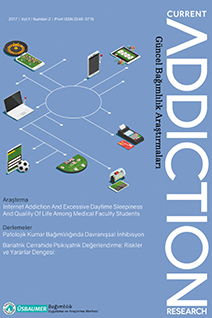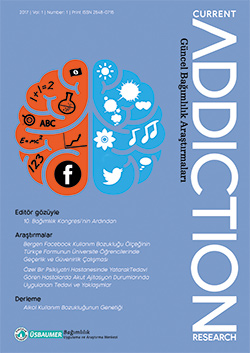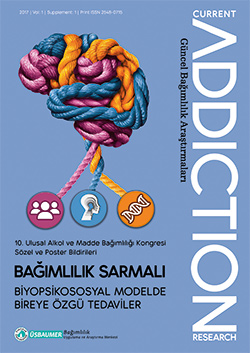Years
2025
2024
2023
2022
2021
2020
2019
2018
2017
Categories
Authors
- ALEJANDRO BORREGO-RUIZ (1)
- AYŞEGÜL DUMAN (1)
- Abdullah TÜRKMEN (1)
- Ahmet Tamer AKER (1)
- Ahmet Yılmaz (1)
- Ahmet Üzer (1)
- Ali Yasin Kafes (1)
- Ali Yücel GÜLER (1)
- Alptekin ÇETİN (1)
- Alptekin Çetin (1)
- Altunışık Toplu Sibel (1)
- Aslı Enez Darçın (1)
- Aslı Kayacan (1)
- Aslı Zeynep Başabak Bhais (1)
- Aslıhan Polat (1)
- Aybüke Kaplan (1)
- Ayşegül Tosuner (1)
- Azize TÜRKOĞLU (1)
- Başak Ünübol (1)
- Berhudan Şamar (1)
- Beyza Yaz (1)
- Birgul Kekliltepe (1)
- Birgül CUMURCU Hatice (1)
- Birgül Cumurcu Hatice (1)
- Bolat Kaya Özlem (1)
- Burcu YÜCETÜRK (1)
- Bülent COŞKUN (1)
- Caner ASLAN (1)
- Cemal Onur NOYAN (4)
- Cemal Onur Noyan (4)
- Ceren GÜNGÖR (1)
- Ceyda ŞİŞMAN ÜNLÜ (1)
- Ceylan Ergül Arslan (2)
- Cihat Paltun Salih (1)
- DURMUŞ ELİF (1)
- Davut Genç (1)
- Deniz Doğan (1)
- Deniz Eryılmaz (1)
- Derya Gündüz Hoşgör (1)
- Didem Beşikçi Keleş (1)
- Dilan Erkan (1)
- Duygu KILIÇ ÖZTAN (1)
- EMLU HAKAN (1)
- Eda Deligöz (1)
- Ekin Sönmez Güngör (1)
- Elif Mutlu (1)
- Erkal ERZİNCAN (1)
- Erkal Erzincan (2)
- Erol Göka (1)
- Fagan Zakirov (1)
- Fatma Betül Esen (1)
- Fatma Eren (2)
- Feyza ÇELİK (1)
- Filiz Özsoy (1)
- FİDAN ENİSE KÜBRA (1)
- Gizem Akülker (1)
- Gul Eryılmaz (1)
- Gökben Hızlı Sayar (3)
- Gül ERYILMAZ (4)
- Gül Eryılmaz (2)
- Gürler GÜZ (1)
- Gürler Güz (1)
- HANDE TUĞÇE DEMİRCİ (1)
- HATİCE OKSAL (1)
- Habib Erensoy (1)
- Hasan Kaya (4)
- Hasan Mervan Aytaç (1)
- Hatice Turan (2)
- Hatice Özyıldız Güz (1)
- Haydar Hoşgör (1)
- Hüseyin Ünübol (2)
- HİLAL ÇERKEZOĞLU (1)
- Hızlı Sayar Gökben (1)
- Işıl Gogcegoz (2)
- Işıl GÖĞCEGÖZ (1)
- Işıl Göğcegöz (2)
- KABA AYŞE (1)
- KABA FATİH (1)
- KARABURUN MERVE (1)
- Kursad Nuri Baydili (1)
- Lütfiye Nur Akkoç Arabacı (1)
- Melike Yerebakan Tüzer (1)
- Merve Metin (1)
- Meryem Zeynep Uğurlu (1)
- Mine Ergelen (1)
- Murat Yalçın (1)
- Mustafa AKAN (1)
- Mustafa Akan (1)
- Müberra Kulu (1)
- Nermin GÜNDÜZ (2)
- Nermin Gündüz (2)
- Nesrin Dilbaz (5)
- Nevzat Tarhan (1)
- Nilüfer SAATCİOĞLU TINKIR (2)
- Nisanur Sarıgül (1)
- Nuran Korkmaz (1)
- Onur Gökçen (1)
- Rüstem Mustafaoğlu (1)
- SALİH GÜLEN (1)
- Salih Cihat Paltun (1)
- Sedef KOÇ BAL (1)
- Selami Ülker (1)
- Sema AKKOYUN (1)
- Serdar Nurmedov (2)
- Sever Yıldırım (1)
- Sevinç Sütlü (1)
- Simge ALEVSAÇANLAR CÜCÜ (2)
- Sümeyra Bilgiç (1)
- Tijen Acar (1)
- Tijen ŞENGEZER (1)
- Tijen Şengezer (1)
- Tonguç Demir Berkol (1)
- Tuba Öcek Baş (1)
- Tuğba Yılmaz (1)
- Türker Tekin Ergüzel (1)
- Yasin Hasan Balcıoğlu (1)
- Zakirov Fagan (1)
- Zehra Arıkan (1)
- Zeynep Ülke (1)
- Zeynep Şahin (1)
- Zühal Albayrak (1)
- Çağrı Yalçın Çınar (1)
- Çelik Hüseyin (1)
- Çetin Alptekin (1)
- ÖMER BÜBER (1)
- ÖZKAN EZGİ (1)
- Özge Kutlu (1)
- Özge Nur Kutluer (1)
- Özge Timur (1)
- Özlem Bolat Kaya (1)
- İrem Teke Bulut (1)
- Şafak Yalçın Şahiner (1)
- Şule DOYAROĞLU (1)
ARTICLES
Case Report
Respiratory Depression caused by Buprenorphine and Benzodiazepine Use
Hasan Kaya,Bolat Kaya Özlem,Cihat Paltun Salih
2018, 2(1), s:22-26
Buprenorphine is a semi-synthetic opioid derived from thebaine. It is used for analgesic effect and opioid substitution therapy. In Turkey, buprenorphine and naloxone combination (Suboxone®) has been used in opioid substitution therapy since 2010. In this paper respiratory depression arising after buprenorphine use together with benzodiazepine will be told and possible mechanisms of this interaction will be discussed.
Case Report
Primary-Secondary Differentiation of Substance Use Disorders and Psychosis Association: Case Report
Işıl Göğcegöz,Fagan Zakirov
2018, 2(1), s:27-30
Psychoactive substance use disorder can be defined as a chronic illness with an uncontrollable impulsivity to drug use by affecting reward, motivation, memory and decision making mechanisms in individuals brains. These substances can cause dangerous consequences in the lives of individuals by causing addiction and, on the other hand, by stimulating or depressing the central nervous system, causing mood, mental state, behavioral and motor function disorders. Caffeine, hallucinogens, lysergic acid diethylamide (LSD), inhalants, nicotine, phencyclidine, sedatives, hypnotics, anxiolytics, anabolic steroids, nitrous oxide are among the addictive substances (1 ,2). The incidence of psychiatric disorders in patients with substance use disorders is 2.7 times higher. It has been reported that 70-75% of individuals with substance use disorders are accompanied by at least one psychiatric disorder (2,3). It is also known that substance abuse is more common in psychiatric disorders. In a study conducted in Turkey psychoactive substance use in schizophrenia 3.2%, while bipolar disorder is reported to be 3.5%. In the same study, 39% of the patients who received substance abuse and inpatient treatment received psychotic disorder and 23% received bipolar disorder (4).
Very common psychotic disorder or comorbid condition among substance use related disorders is clinically important. One of the biggest challenges faced by clinicians in this case is the primary-secondary distinction (5). In this study, psychoactive substance use and psychosis association and primary-secondary distinction are discussed through two case studies.
Review Article
Nesrin Dilbaz
2017, 1(2), s:53-55
The prevalence of obesity has been growing on a global scale and almost all health caregivers has been involved in its treatment and management. Bariatric surgery has emerged as an effective approach for weight reduction and associated with improved general health. Preoperative psychiatric assessment for bariatric candidates is necessary since the importance is well established. Also empirical data suggest that a high prevalence of psychiatric comorbidities among bariatric surgery candidates. Research indicates a decrease in certain psychiatric symptoms after weight loss with bariatric surgery. However, the risk of unsuccessful weight loss and suicide in some bariatric surgery patients make monitoring after surgery as important as the careful assessment and management before surgery. Neverthless, this area needs a standard protocol to guide the mental health professionals that deal with bariatric patients. In this review, we focus on the management of bariatric surgery patients both preoperatively psychiatric assessment and postoperatively psychiatric follow up.
Original Article
Nermin Gündüz,Özge Timur,Erkal Erzincan,Hatice Turan,Onur Gökçen,Fatma Eren,Aslıhan Polat
2017, 1(2), s:56-63
Objective: Considering the increasing use of the internet among university students, medical faculty students are thought to be particularly sensitive because of the time they spend on the internet and because of intensive practical and theoretical course schedules. In this study, we aimed to examine the prevalence of internet addiction and also relationship between internet addiction and excessive daytime sleepiness and quality of life. among the medicine faculty students. We aimed to examine the prevalence of internet addiction and also relationship between internet addiction and excessive daytime sleepiness and quality of life among medical faculty students.
Method: This study was carried out among the students of Erzurum Atatürk University Medical Faculty. In this cross-sectional study, sociodemographic data form created by researchers, Young Internet Addiction Scale, SF-36 and Epworth Sleepiness Scale were applied after the signing of the voluntary affirmation document to the medical faculty students.
Results: A total of 274 medical faculty students from various classes were included in the study. 61,32% of the students were found to have internet addiction. 53.28% of them were at mild level, 8,04% of them were at moderate level. There was a positive correlation between internet addiction scale total score and epworth sleepiness scale total score. There was negative correlation between internet addiction and each subscale of SF 36.
Conclusion: This study is the first study to evaluate internet addiction, excessive daytime sleepiness and quality of life among medical faculty students. In our study group internet addiction was determined as one of the reasons for excessive daytime sleepiness. That’s why we must focus on the treatment of internet addiction which is a serious problem in social context in recent years.
Review Article
PATOLOJİK KUMAR BAĞIMLILIĞINDA DAVRANIŞSAL İNHİBİSYON
Gürler Güz,Hatice Özyıldız Güz
2017, 1(2), s:65-71
The gambling disorder was removed from impulse control disorders brought to the head of substance and related disorders with DSM-5. It is one of the reasons for this change to be seen in gambling disorders of malpractice processes in the reward and punishment systems seen in substance use disorders. In the development and maintenance of pathological gambling addiction, it has been shown that inhibition of behavior has an important role rather than impulsivity. Delay in suppression is one of the executive functions and is mainly due to prefrontal dysfunction. For this reason, investigations also examined brain functions in gamblers.
Case Report
NALTREKSON CİLT ALTI İMPLANT UYGULAMASI SONRASI GELİŞEN CİLT REAKSİYONU
Salih Cihat Paltun,Şafak Yalçın Şahiner,Hasan Kaya,Erol Göka
2017, 1(2), s:72-72
Naltrexone subcutaneous implants are among the new alternatives in the treatment of alcohol and opioid addictions in our country.Nausea, vomitting, headache, skin rash, depression, anxiety and loss of energy are side effects reported in the use of naltrexone. This paper discusses a case of itching and skin eruptions following the application of naltrexone subcutaneous implant.
Case Report
“TILL PETHIDINE DO US APART”; ADDICTED HEALTHCARE PROFESSIONAL COUPLE
Alptekin Çetin,Ahmet Yılmaz,Cemal Onur Noyan
2017, 1(2), s:75-77
Pethidine(Meperidine) is a synthetic opioid analgesic of the phenylpiperidine class. Since 1940ies, addictive potential of pethidine was documented in many reports. Pethidine addiction is also common among medical doctors and nurses. We present clinical features and treatment response of a married couple, a gastroenterologist and a nurse who were admitted with pethidine addiction. A 34-year-old male(a gastroenterologist) and a 26-year-old female(a nurse) married couple were admitted to clinic with the use of pethidine intravenously. While male patient refused treatment, female patient continued her treatment in inpatient service. Healthcare professionals have to be cautious while using and prescribing drugs with addiction potential. Surgeons, anesthesiologists, gastroenterologists psychiatrists and surgical nurses are the risk groups for dependency among those professionals.
Editorial
Nesrin Dilbaz
2017, 1(1), s:9-11
Editorial
Çelik Hüseyin
2017, 1(1), s:13-15
Original Article
Zeynep Ülke,Cemal Onur Noyan,Nesrin Dilbaz
2017, 1(1), s:16-25
Objective: The objective of this study was to adapt the “Bergen Facebook Addiction Scale (BFAS)” developed by Adreassen et al (1) into Turkish, and to evaluate the reliability and validity of the Turkish version of the Bergen Facebook Addiction among university students.
Method: The study was conducted in 2015 at Uskudar University and Yeditepe University (Istanbul-Turkey) with a total of 300 students from different majors and age groups. The draft scale was finalized after being translated and corrected by experts in the relevant fields. To determine the validity of the scale; factor analysis was performed and the results revealed that, of the 6 items reflecting the six core elements. It was detected that all items were distinctive with respect to relationship of each item with its related factor. Reliability level was determined by test – retest and internal consistency analysis. In addition, to test the criterion dependence validity of the scale, the correlation between the data gathered from Bergen Facebook Addiction Scale was analyzed respectively with data collected from the Smartphone Addiction Scale, Facebook Use Variance and Facebook Addiction Self-evaluation.
Results: The internal consistency coefficient was calculated using the Cronbach’s Alpha formula and gave a result of crα= .89. The 3-week test-retest validity Cronbach’s alpha was .76 for the six-item Bergen Facebook Addiction Scale. The factor analysis and testretest results confirmed the reliability and validity of the 6-item scale.
Conclusion: Bergen Facebook Addiction Scale is able to measure reliably, and the scale is a valid and reliable tool to be employed in a clinical environment to predict addiction levels of individuals regarding Facebook use in the Turkish society as well.



 2. Sayı
2. Sayı
 1. Sayı
1. Sayı
 Ek Sayı
Ek Sayı







